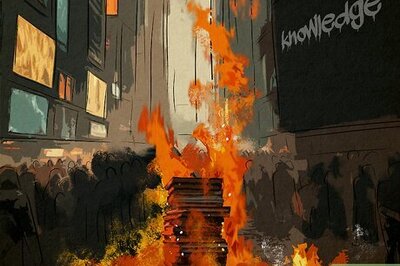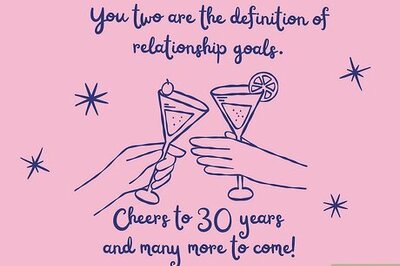
views
THIRUVANANTHAPURAM: Is your country as beautiful as the frames in your movie?Those are the tribal lands that you see, the Palawan islands, also called the Philippines’ Last Frontier. The National Geographic channel named Palawan one of the top ten wonders of the world. So... yes, my country is really a wonder! Does the sound of a motor in the backdrop of the first scenes indicate human intrusion into these pristine land?(Thinks) Yeah....There is the sound of the motor. It could be anything, a chainsaw, a speed boat, anything that tells of the invasion of the modern chaos. If you noticed, the setting is modern, but it is kept subtle. The cars, the speed boat, the clothes and everything that suggest the period is kept in the background. The names of some of the characters – Tony, Claring – they couldn’t possibly be the names of Palawan natives. Were they selected consciously?I am glad the names were noticed! (grins) The names are suggestive of the Christian influence. The Palawan natives were converted to Christianity on a mass scale. Does the wounded woman in the bamboo carrier suggest a vandalised Palawan nature? Yes, now that was intentional. I did try to bring in this connection between woman and nature. People who have visited my country often ask me how anyone can imagine destroying something so beautiful. In fact, a very prominent environment activist in Philippines was to be a part of the this film. But, he was murdered last year. How much of an awareness regarding the Palawan tradition exists in Philippines?Very little. There has been minimal study about Palawan culture. The only notable work is by a French woman who did a study in the 1990s. The others, who went out to the city and were educated, preferred to hide their lineage. My mother for instance, is among the first generation Palawans who went to the university. But she kept her Palawan origin a secret. Then how did you find out about your ancestry? I traced, because I had suspicions. She told me the myths. I was a restless child and would not sleep asking for stories. She only knew the myths from her culture (laughs). After my studies, I went on to explore the truth about my ancestry. I decided to follow the Palwan faith though raised as a Christian. But, I was very good at the Chruch, the priest loved me! (laughs)So is the movie autobiographical?It is. Especially the character of Aris, who comes back from Manila to find his Palawan ancestors. The scenes where he is learning the ritualistic dance and goes through the test to qualify as a Shaman, those are personal experiences. Like him, I could not pass the test, because of the training to think logically. He sees the mountains in the trance, but wakes up before he could pass the test. But, if I has passed it, I would have become a Shaman and could not have told the world the tale of Palawan. So you are on a mission?(Nods) Busong, in Palawan, means an immediate consequence for your action. In my film, it was originally subtitled as Karma. But, Karma is carried over onto many births. Busong is instant, within your lifetime. I must tell the world of this busong for destroying the Palawan before going back to my country with the film so that I cannot be silenced again.




















Comments
0 comment